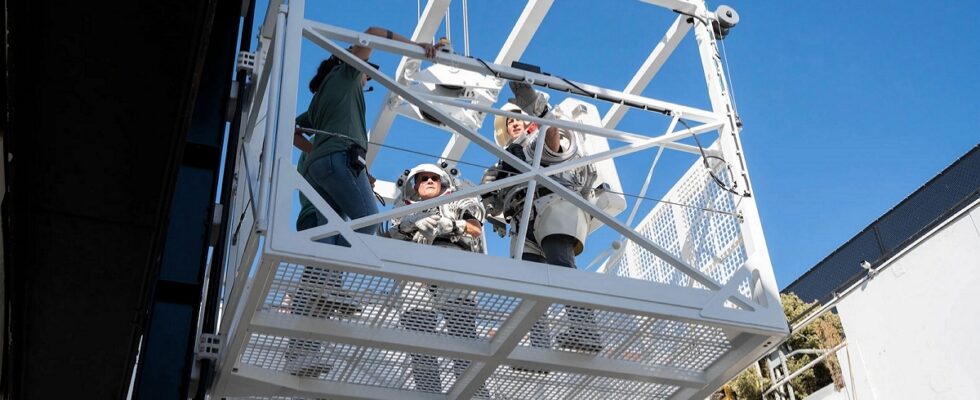NASA is preparing for its most ambitious lunar mission in more than half a century: Artemis III, which will allow the first woman and first person of color to walk on the Moon in 2025.

Before the historic landing of the Artemis III mission, which should take place in 2025, NASA must still overcome certain technical challenges, in particular that ofe efficiently and safely transport astronauts from their spacecraft to the lunar surface.
For this, the space agency is working in particular on a lunar elevator. The latter is an innovative concept that includes a basket-shaped platform that slides along a vertical rail attached to the side of the lander. Elevator will allow crew to descend from the top of SpaceX’s Starship HLS landerwhich will carry it from the Orion capsule into orbit around the moon, to the dusty ground below.
NASA is working on a lunar elevator for its astronauts
The Starship HLS lander will be a modified version of the Starship vehicle that SpaceX is developing for interplanetary missions, and which recently completed its second test flight. The lander will have a spacious cabin, large windows and multiple engines for landing and ascent.


To test the feasibility of the lunar elevator, NASA astronauts Nicole Mann and Doug Wheelock recently carried out a simulation exercise at the Johnson Space Center in Houston, Texas, as can be seen in the image above. They carried spacesuits and climbed into a mock-up of the elevator podfeaturing realistic controls and interfaces.
The test was designed to evaluate the performance of the elevator system, as well as the mobility and comfort of the astronauts. The crew was able to provide feedback on various aspects of the elevator, such as door latches, ramp deployment, cargo space and movement along the rail, which should allow NASA to improve it by the Artemis III mission.
The lunar elevator is one of the many innovations that NASA is working on for the Artemis III mission, which will mark the first human moon landing since Apollo 17 in 1972. We are thinking in particular of new space suits, which have the advantage of using an electric field to fight against lunar dust. Before setting foot on the Moon again, NASA has already launched Artemis I in 2022, an uncrewed test flight of the Orion spacecraft and Space Launch System rocket. Artemis II will follow in 2024, with a crew of four astronauts performing a flyby of the Moon.
